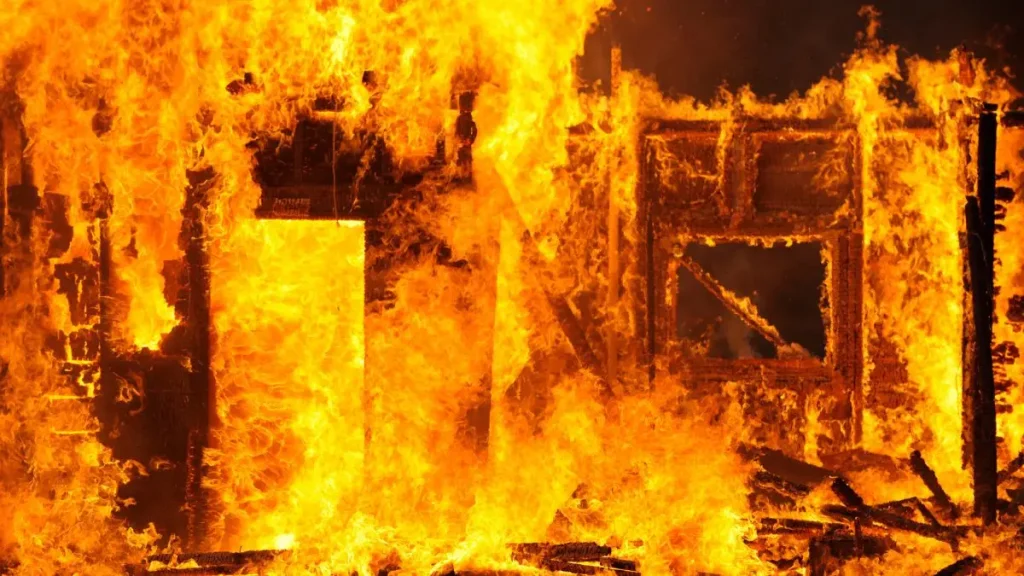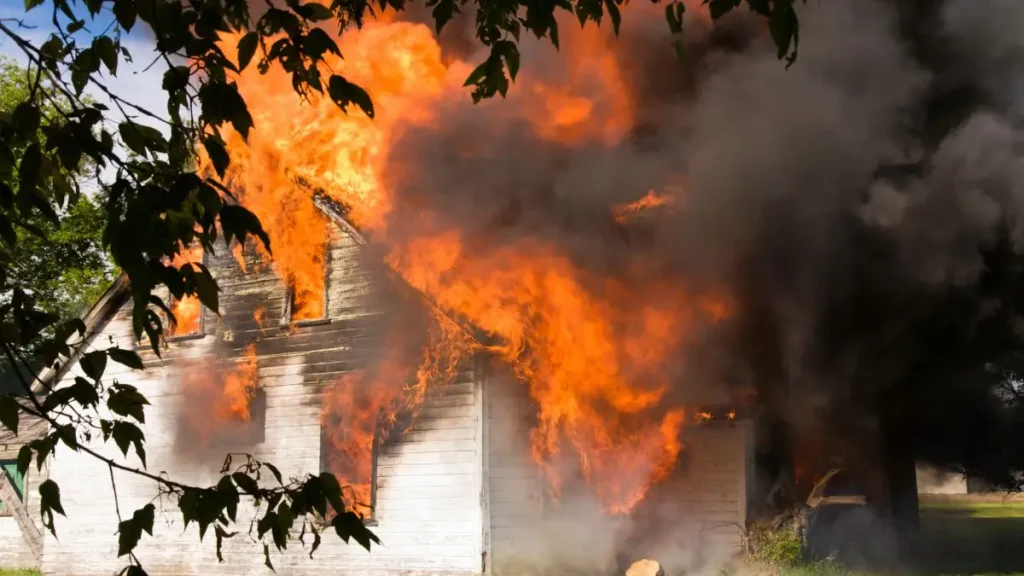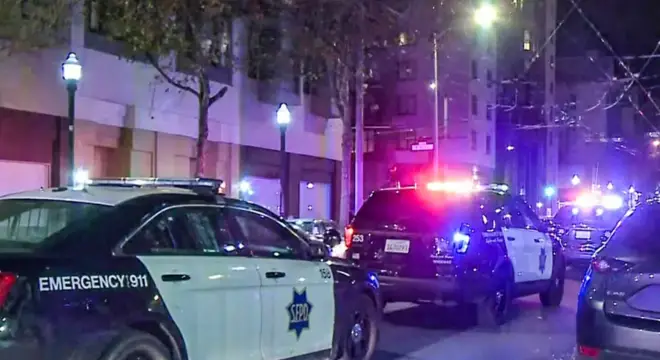Ogden Mobile Home Resident Dies After Smoke Filled Trailer Fire
It was just after 5:30 in the morning when firefighters rushed to a burning mobile home near 1065 Wall Avenue in Ogden, Utah. Thick smoke. Active flames. And somewhere inside—someone trapped.
Crews didn’t wait. They went straight in, pulled the person out, and got them to the hospital as fast as they could. But despite their efforts, the victim didn’t make it.
We still don’t know who the person was. Officials haven’t released their name yet. What we do know is this fire didn’t spread beyond that single trailer. Twenty-six firefighters, from both Ogden City and North View Fire District, were on the scene within minutes. The blaze was under control shortly after.
Deputy Fire Chief Michael Slater called it what it was: heartbreaking. And he’s right. Fires like this don’t just burn homes—they leave holes in families and communities.
“We are heartbroken at the loss of life and our condolences go out to the family,” Slater said. And that’s a line that hits harder when you remember this happened while most of us were still asleep.
Firefighter Response: Fast, Focused, But Not Enough
If you’ve ever watched firefighters at work, you know—it’s not just about putting out flames. It’s about getting there fast, thinking faster, and risking everything when seconds matter. That’s exactly what happened here.
According to KUTV, crews arrived within minutes of the first 911 call. They found the mobile home already engulfed, smoke pouring out, fire moving quick. No time to waste—they went in.
The rescue team found someone inside, pulled them out, and handed off to medics on the spot. The victim was alive when they left the scene. That gave everyone hope. But later, at the hospital, things took a turn no one wanted.
What stood out to me was the scale of the response. Twenty-six firefighters showed up. That’s not small-town apathy—that’s commitment. People doing everything they can, even when they know they might be too late.
I don’t know about you, but I think we forget sometimes that these folks don’t just fight fire—they carry the weight of what they couldn’t save.
What Caused the Fire? Investigators Still Looking for Answers

Right now, we don’t know exactly what sparked the fire. And that not knowing—it’s frustrating, especially if you live nearby or in a similar kind of home.
FOX 13 reported that the Utah State Fire Marshal’s Office has taken over the investigation. That usually means they’re looking into everything: electrical wiring, heat sources, even what appliances were running before dawn.
Officials say damage is estimated around $100,000. That’s a big number for one small home. And it puts into perspective just how fast these fires can escalate.
If you’re reading this wondering, “Could something like this happen to me?”—that’s exactly the right question to ask. Fires in mobile homes have different risks. Which brings us to something most people don’t realize…
Sadly, this isn’t the first time a quick response couldn’t prevent a fatal outcome—like in this case where a 62-year-old man died in an overnight Gulfport house fire.
Why Mobile Homes Burn Faster — And Deadlier?
Let me be blunt: mobile homes burn differently. And not in a good way.
They’re often built with lighter materials that don’t hold up well in a fire. Insulation melts fast. Interior walls go up quicker. And when fire gets a head start, there’s less time to react. If you’re asleep when it starts, your odds drop fast.
Then there’s the layout. Narrow hallways. Limited exits. If fire hits a hallway or doorway first, you’re cornered. It’s terrifying to even think about, but it’s the reality for millions who live in trailer parks across the U.S.
NFPA data has shown that people in mobile homes are twice as likely to die in a fire compared to those in traditional houses. That’s not a random stat—it’s a pattern.
And that’s why I think this incident deserves more attention than just a one-day headline. Because it’s not just about what happened in Ogden. It’s about what could happen anywhere.
Have you ever dealt with a fire risk in your home—or taken steps others might overlook? Drop your thoughts or experiences in the comments—your story could help someone else stay safe.
How You Can Stay Safer in a Mobile Home?
Now here’s the part that might actually save a life—yours, or someone you love.
If you live in a mobile home, or even visit one regularly, please don’t skip this:
- Check smoke detectors — not once a year. Do it monthly. Make sure they’re working.
- Space heaters? Keep them far from anything flammable. I’ve seen fires start from a sock left too close.
- Don’t overload outlets. Especially in older trailers. Too many devices plugged into one power strip is a red flag.
- Have two exit plans. One’s not enough. Know how you’d get out from each room. Practice it.
If your mobile home doesn’t have a second door or window exit option—that’s a conversation to have today, not after something happens.
Safety doesn’t have to be expensive. But in a mobile home, ignoring it can be.
Similar dangers were seen in this DeKalb County fire where the roof collapsed during an intense blaze—showing how fast things can escalate.
Is This Part of a Bigger Pattern in Utah?

This isn’t the first mobile home fire in Utah—and unfortunately, it won’t be the last.
Just a few months back, there was another fire on Wall Avenue where a dog and a cat died. And in Roy, there was a case where two trailers burned back-to-back in the same week. I’m not trying to scare you—I’m just pointing out what no one else is really saying: this is a recurring issue.
The numbers back it up too. According to NFPA and local reports, mobile homes across Utah and the U.S. have seen a steady increase in fire-related fatalities over the last five years. And the reasons are always familiar: space heaters, overloaded circuits, no working smoke alarms.
What’s missing is action. There’s been some talk about tougher building codes for mobile homes, but not much has moved on that front. Some trailer parks have made small upgrades—better fire hydrants, stricter rules—but it’s inconsistent.
And here’s the part no other article has mentioned:
If you’re renting a mobile home, you might not even know what materials it’s built with. Or when it was last inspected. That’s a major blind spot.
So yeah, one fire is a tragedy. But multiple fires, year after year? That’s a warning.
Just like in this Iowa fire where a family barely escaped with their pet, stories like these are a reminder that fire safety isn’t just about statistics—it’s personal.
What Happens Next? And Why It Matters to You
Right now, the Utah State Fire Marshal is doing what they do after every major fire: piecing together what started it, how fast it spread, and whether it could’ve been prevented.
But for you and me, here’s what really matters—what we learn from it.
If you live in a mobile home, or even near one, now’s the time to check your alarms, review your exits, talk to your kids about fire plans. Don’t wait for another story like this to remind you.
Officials haven’t said when the full investigation report will be released. It could take weeks. But that doesn’t mean we sit back.
You can also follow updates directly from local departments—Ogden Fire Department, North View Fire District, and the Utah Fire Marshal all post frequently on Twitter and Facebook. Worth a follow, honestly.
And if something does change—like safety codes, inspection rules, or new support funds—we’ll be here to break it down for you. Clear, simple, no noise.
People are also sharing safety tips, updates, and local fire alerts through neighborhood WhatsApp groups—it’s become a quick way to stay informed when something happens nearby.
Final Thoughts
Some stories stay with you. This one should.
Because it’s not just about a fire. It’s about what we often ignore—old alarms, loose wires, that one space heater we meant to check. It’s about how fast everything can change, even while you’re asleep.
If you take anything from this, let it be this: don’t wait for a wake-up call that comes wrapped in smoke and sirens.
Want more stories and insights like this—plus real-life safety takeaways from across the U.S.? Explore our full Home Security coverage.
Disclaimer: This article is based on publicly available news sources and official statements as of the time of writing. Details may change as the investigation continues. For urgent safety concerns, always refer to your local fire department or emergency services.


